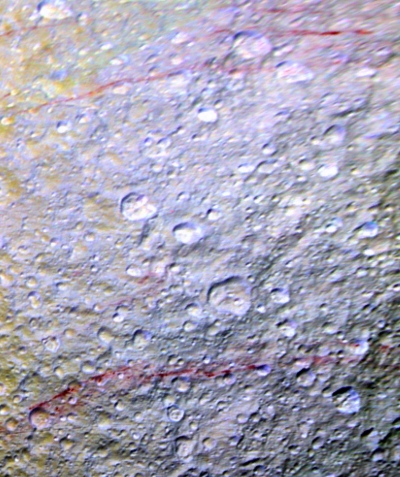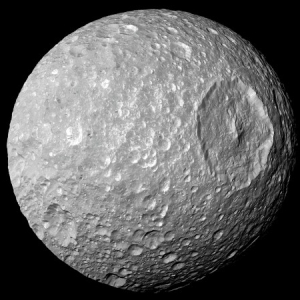Cassini’s last close-up images of Dionne

Cool image time! NASA has released images from Cassini’s Monday close fly-by of Saturn’s moon Dionne.
The press release itself did not include any of the close-ups for some reasons. You have to dig for them at the site. Go here, here, here, and here to see a few of more interesting, the first of which is a global view taken just before the fly-by. The second is the highest resolution image, with a resolution 10 feet per pixel. The third shows the nighttime surface lit entirely by reflected light from Saturn. The fourth, shown on the right, was taken from an altitude of 470 miles with a resolution of 150 feet to the pixel. It shows the moon’s rolling, pock-marked, and cratered surface, to the horizon.

Cool image time! NASA has released images from Cassini’s Monday close fly-by of Saturn’s moon Dionne.
The press release itself did not include any of the close-ups for some reasons. You have to dig for them at the site. Go here, here, here, and here to see a few of more interesting, the first of which is a global view taken just before the fly-by. The second is the highest resolution image, with a resolution 10 feet per pixel. The third shows the nighttime surface lit entirely by reflected light from Saturn. The fourth, shown on the right, was taken from an altitude of 470 miles with a resolution of 150 feet to the pixel. It shows the moon’s rolling, pock-marked, and cratered surface, to the horizon.



